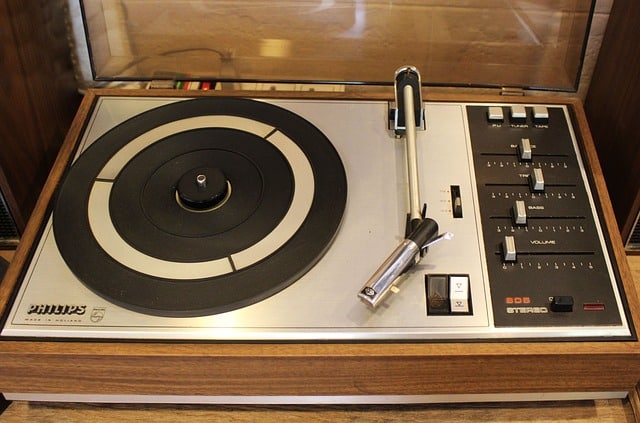
A record player allows you to play vinyl records.
A record player is a device that allows the reproduction of sound or musical records . The device features a rotating saucer , on which the disc is located, and has a pickup system that connects to a speaker .
It is important to mention that the records that a record player plays are vinyl records : circular plastic sheets on which sounds are recorded. These records, among the media for audio storage, succeeded the phonograph cylinders and preceded the cassettes .
Sound recording and playback
To understand what a record player is, it is necessary to take into account several issues. Throughout history, humans have managed to record sound ( sound waves ) on different media. This allows the performance of a song, for example, to be recorded on a certain material and then played back on the appropriate device.
Currently, sound waves are usually represented by electrical signals that are digitally encoded , which is called digital audio . Decades ago, however, sound waves were stored as analog signals thanks to mechanical, magnetic or optical recording .
Vinyl records , then, are a storage medium for sound. These polyvinyl chloride plastic plates have grooves where the sound is encoded in an analog manner. To hear that sound, you need a record player.

Thanks to the turntable, it is possible to listen to music stored analogically on discs.
Turntable Features
A record player is equipped with an electric motor that allows the platter on which the records are placed to rotate at a constant speed. It also has a tonearm and a pickup cartridge .
The arm is responsible for traveling the record and provides support for the capsule that houses the plectrum or needle . Both elements make it possible to track the grooves of the disc. As for the capsule, it is the transducer that converts the mechanical energy - generated with the movement of the pick over the grooves of the disc - into electrical energy .
That electrical energy, finally, is converted back into sound thanks to the loudspeaker . In other words, the sound that is recorded on the vinyl record ends up "coming out" through the speaker.
Disc format
The records played on a record player can be of different sizes and recorded at different speeds. The largest are the so-called LPs (from the English expression long play ) or long-playing records , which have a diameter of 12 inches ( 30.5 centimeters ).
The LPs are recorded at 33 and 1/3 revolutions per minute . Its capacity is about 25 minutes of audio per side.
EPs , on the other hand, are 7-inch ( 17.5 cm ) records recorded at 33 and 1/3 or 45 RPM with a capacity of about 12.5 minutes per side. Finally, singles are 7-inch , 45 RPM records that hold 3 minutes on each side .
Currently, many music lovers continue to use record players as they enjoy the characteristics of their sound. The usual thing, however, is that music is streamed via the Internet: the sound does not reach the listener through a physical product (such as a vinyl record, a cassette or a compact disc), but through digital data that is transmitted through the Web.
